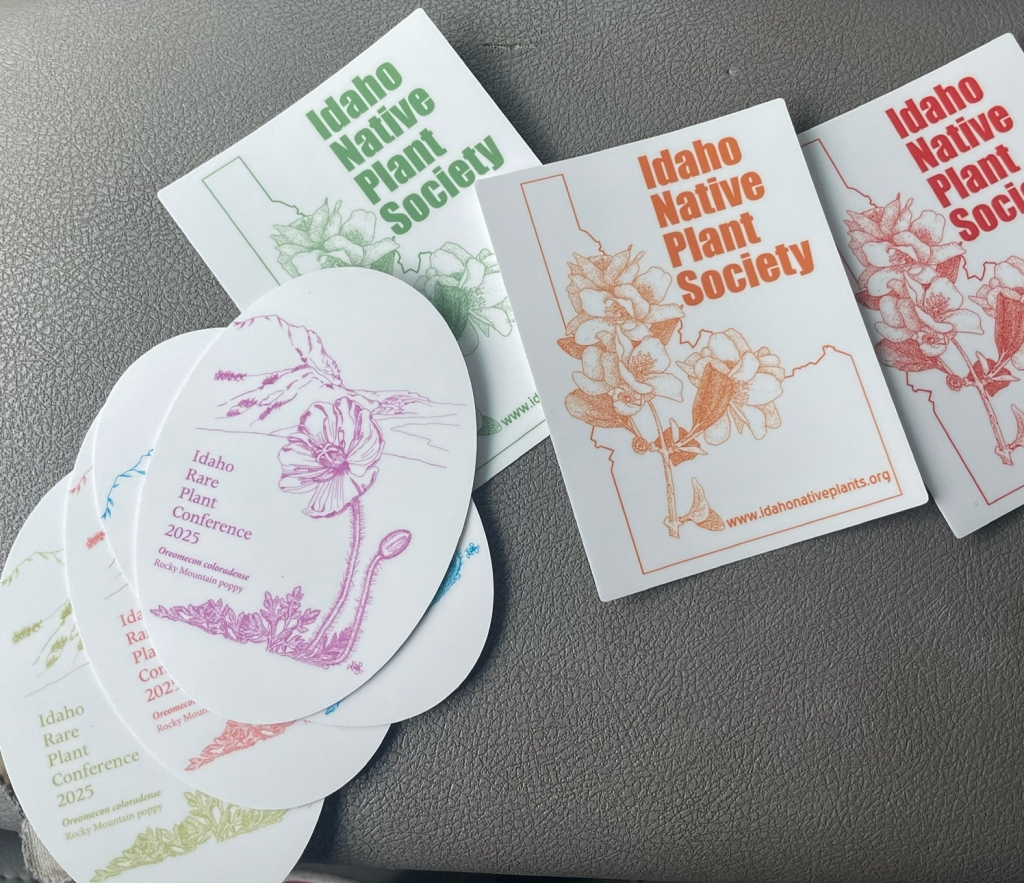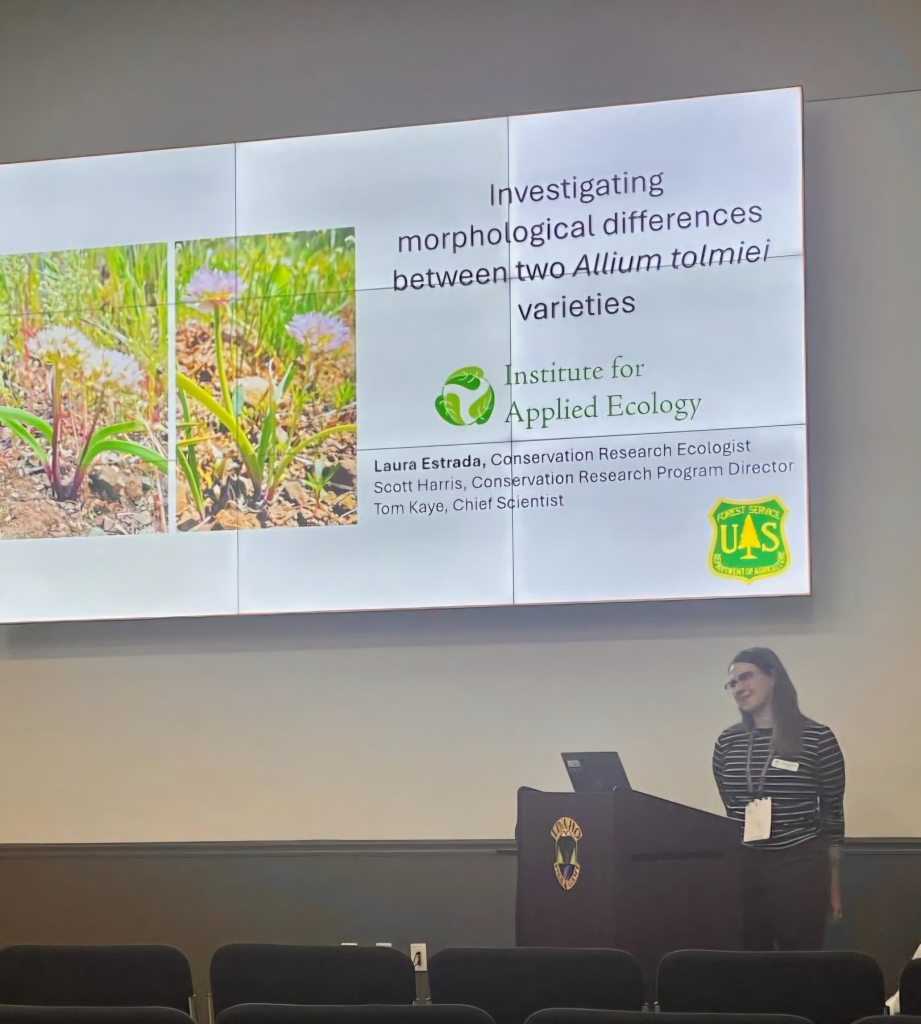A Journey Through the Idaho Rare Plant Conference
by Laura Estrada, Conservation Research Ecologist, April 2025
This February, I had the incredible opportunity to present at the Idaho Rare Plant Conference, a small but mighty gathering of botanists and conservation enthusiasts from across the Pacific Northwest. While the conference may have been intimate, the conversations and collaborations were anything but small—each interaction was a chance to exchange knowledge, cultivate ideas, and deepen our collective understanding of rare plant conservation.
This year’s conference theme emphasized the importance of alpine ecosystems and the rich diversity of plant communities that thrive in these harsh yet breathtaking habitats. Alpine environments serve as refuges for many specialized species, and as climate change accelerates, these fragile ecosystems face mounting challenges. Through thoughtful discussions and research presentations, the conference highlighted the urgency of protecting these unique landscapes and the species that call them home.
The true highlight of the conference was the showcase species—Rocky Mountain Poppy (Oreomecon coloradense), an alpine gem with a story as captivating as the high-elevation slopes it inhabits. Pam Brunsfield, retired Director of the Stillinger Herbarium, recounted her remarkable discovery of this elusive plant on Bell Mountain in the 1970s. Fast forward to 2024, and Kristin Kaser, a botanist with the Idaho National Laboratory, shared her thrilling rediscovery of the same population, ensuring that this rare species is once again on the botanical radar. Their shared passion and dedication to tracking down the Rocky Mountain Poppy was a testament to the perseverance and curiosity that drives plant conservation forward.
My presentation, funded by the U.S. Forest Service and in partnership with the Payette National Forest, focused on the morphological differences between two intriguing varieties of Tolmie’s Onion (Allium tolmiei)—A. tolmiei var. tolmiei and A. tolmiei var. persimile. Through this project, I explored the subtle yet significant variations that distinguish these varieties, adding another piece to the puzzle of understanding these varietal differences. Sharing this research with a room full of botanists who have an eye for taxonomy and conservation made for an unforgettable experience.
Though the conference was small, the opportunity to collaborate with fellow botanists from the Pacific Northwest was invaluable. Whether discussing management strategies, sharing field stories, or brainstorming future research, the collective expertise and enthusiasm of the attendees made for a truly enriching experience. As I reflect on my time at the Idaho Rare Plant Conference, I’m reminded that while the work of plant conservation can sometimes feel like climbing a steep mountain, the view from the top—seeing species rediscovered, communities engaged, and knowledge expanded—is always worth it. Huge thank you to Kristin Williams and Daniel Kennedy with the Payette National Forest for inviting me to participate in this amazing conference.


